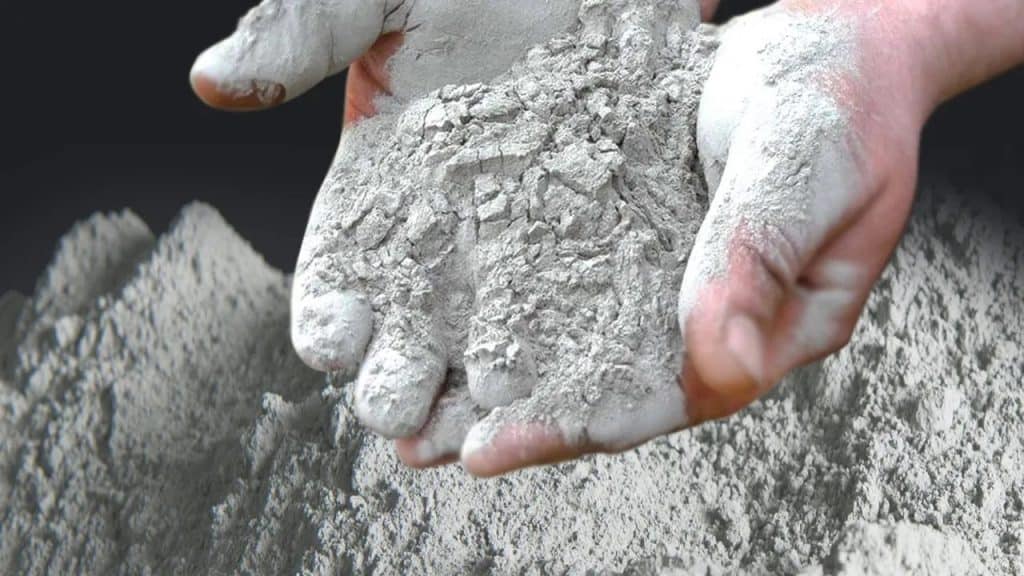
Cement tests are crucial in finding out the characteristics properties and strength of cement. To know the different properties of cement such as consistency, fineness, strength, specific gravity, etc. Here’s an overview of the various cement tests before we get into its details.
- Fineness Test of Cement
- Initial and Final Setting Time Cement test
- Consistency Test of Cement
- The Heat of Hydration Cement Test
- Soundness Test of Cement
- Tensile Strength Test
- Chemical Composition Cement Test
- Specific Gravity Cement Test
- Compressive Strength Test of Cement
- Field Test of Cement
Let’s Check Out The Details!
1. Fineness Test of Cement (IS Code: 4031 (Part 1) – 1996)
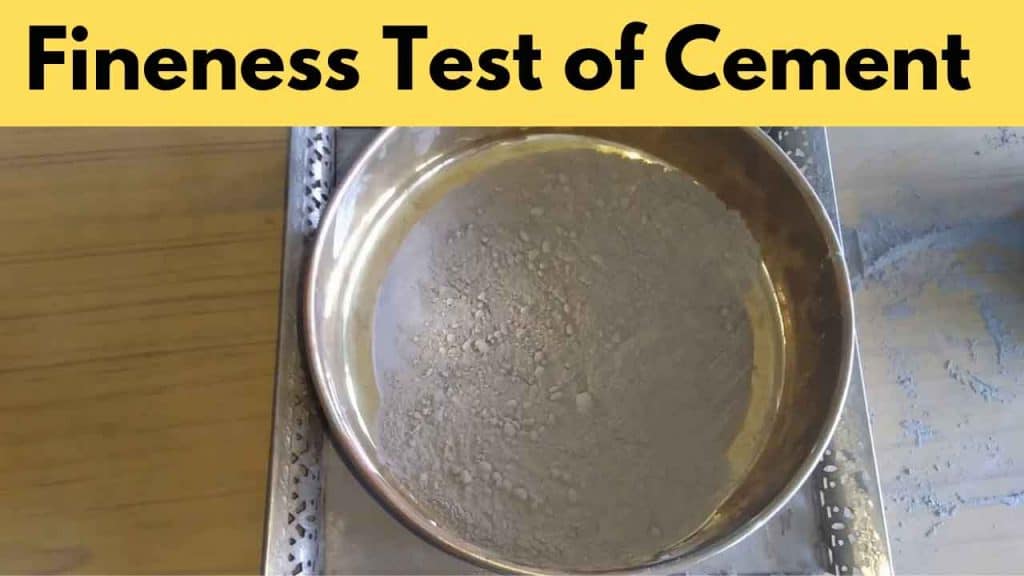
Cement’s fineness is responsible for the rate of gain of strength, rate of evolution of heat, and rate of hydration. The more the fineness of the grains, the more the surface area will be along with the development of strength. This test is done by air permeability test or sieve test.
Sieve Test
The lumps set by air are broken by sieving the cement through a circular and vertical motion continuously for 15 minutes. The residue that is left behind on the sieve is weighed which should not exceed 10% of the ordinary cement. This is a rare cement test.
Air Permeability Test
Blaine’s Air Permeability Test is a type of cement test that is used to find the surface area of cement. It is expressed as the total surface area in sq cm/g. For finer particles, the surface area will be more.
2. Consistency Test of Cement (IS Codes: IS: 5313-1976, IS: 4031 (Part 4) – 1988)
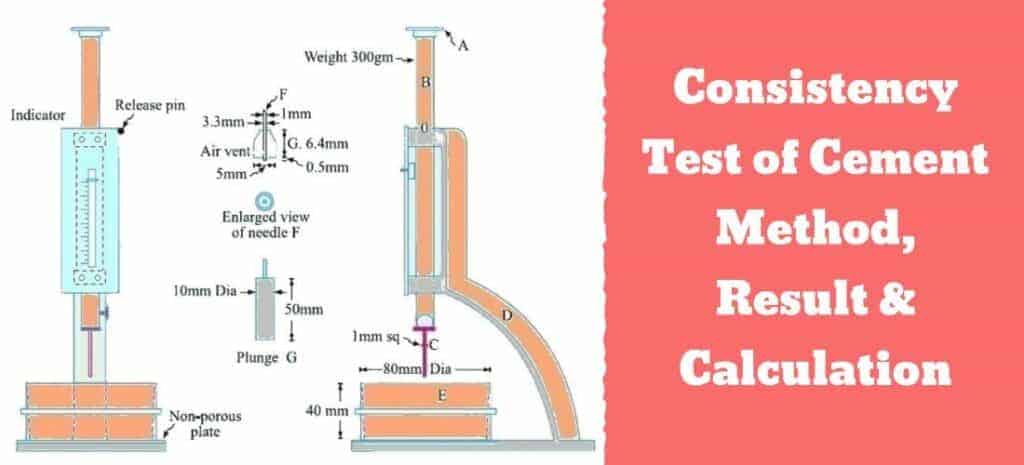
The consistency test of cement is used to determine the setting time of cement. The apparatus used to conduct this cement test is called Vicat’s apparatus. The consistency of the cement paste is expressed as the water content that permits a Vicat plunger of 10 mm diameter and a 50 mm length to pass through a depth of 33mm to 35 mm within a mixing time of 3 to 5 minutes.
You need to do this test thrice and each time the cement must be mixed with varying amounts of water, i.e., from 24% to 27% of the cement’s weight. A constant temperature of 25 degrees C to 29 degrees C and a constant humidity of 20% are to be maintained.
3. Initial and Final Setting Time Cement Test (IS Code: IS: 5513-1976)
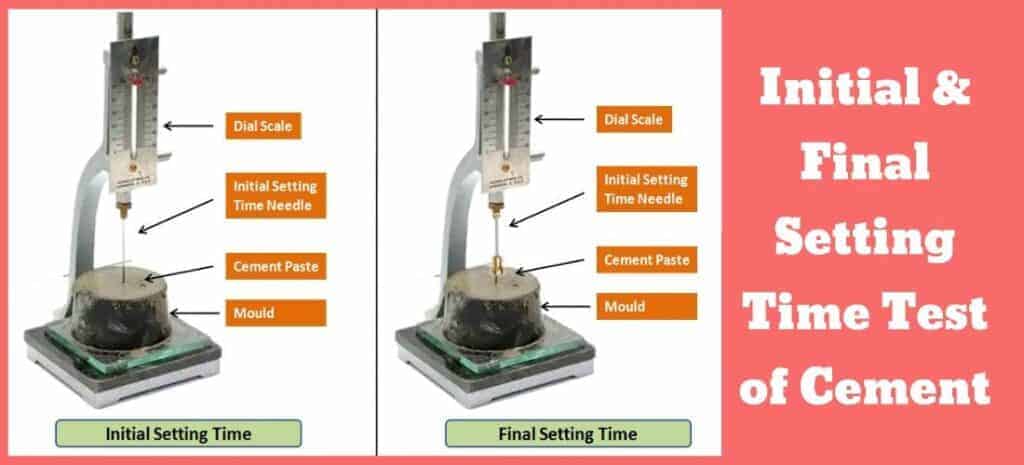
The initial and final setting time of cement is determined by Vicat’s apparatus.
Initial Setting Time
For finding out the initial setting time, a needle of 1 mm square size is penetrated the cement and water paste or mixture made as per the consistency test. The time that the needle takes to penetrate the mixture of 33mm to 35 mm depth is recorded as the initial setting time of the cement.
Final Setting Time
The final setting time of the cement is determined after the mixture has hardened. The same needle of 1mm square size is made to penetrate the mixture up to 0.5 mm depth and the time taken to do so is recorded as the final setting time of the cement.
4. Soundness Test of Cement (IS Code: IS: 4031 (Part 3) – 1988)
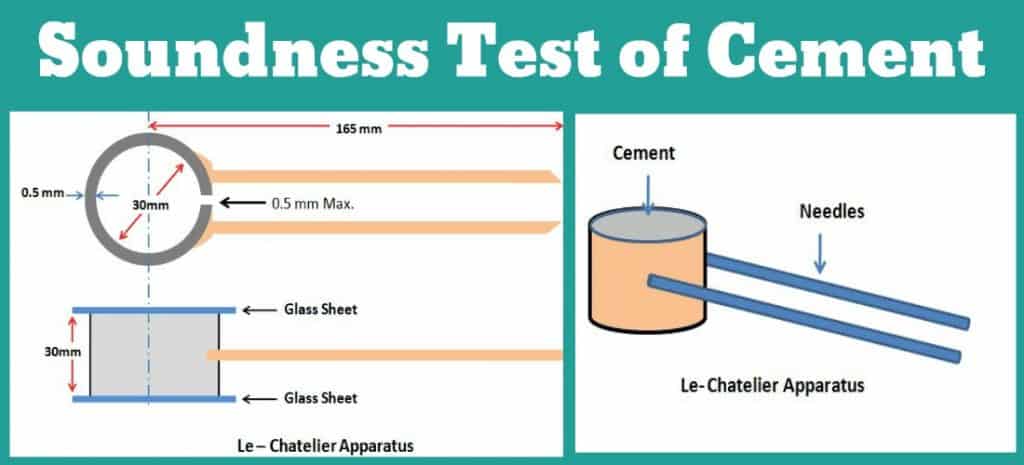
The soundness test of cement is conducted with the help of the Le Chatelier method. It detects the presence of uncombined magnesia and lime in the cement specimen. The ability of the cement to retain its volume after its hardening is said to be the soundness of the cement. Lime deficiency in cement makes it set quicker whereas excessive lime in cement will make the cement expand more after it hardens.
Le Chatelier Method
- In this test, the cement mixture is filled in a lightly oiled Le Chatelier mold up to the top and a glass plate is placed on top of it and some weight is laid on top of it.
- The entire assembly is placed into a water pot and kept at room temperature for 24 hours undisturbed.
- After removing the assembly from the water, the distance between the mold edges is to be measured and marked as L1.
- Submerge the assembly again into the water and the temperature is brought to boiling point. It is cooled down to room temperature and the distance between the mold is again measured (marked as L2).
- The equation to measure the soundness of cement is,
L1 – L2
5. The Heat of Hydration Cement Test (IS Code: IS: 4031 – 1968)
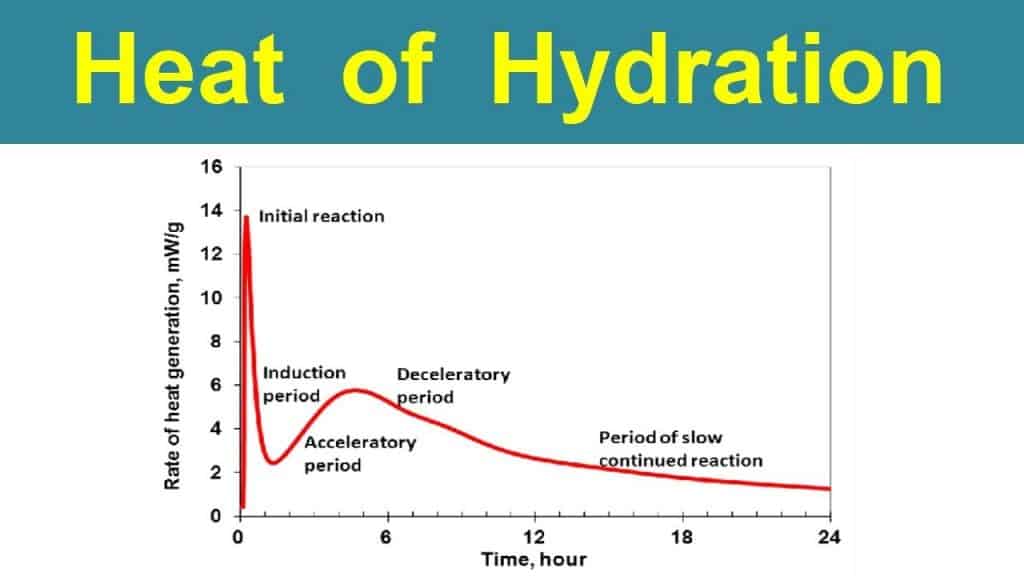
The hydration cement test is carried out by using a calorimeter via the principle of determining heat gain. This test generates a huge amount of heat up to 50 ℃ due to the chemical reactions involved. To avoid such massive heat change, low-heat cement is used in this test. This cement should not generate 75 calories per gram of cement in 28 days and 65 calories per gram of cement in 7 days.
For this test, a mixture of water and cement in 3 glasses and sealed with wax. The standard temperature for this test is 27℃. The equation to measure the heat of hydration is heat released from hydrated cement – heat released from unhydrated cement.
6. Specific Gravity Cement Test (IS Code: IS: 2720 (Part 3))
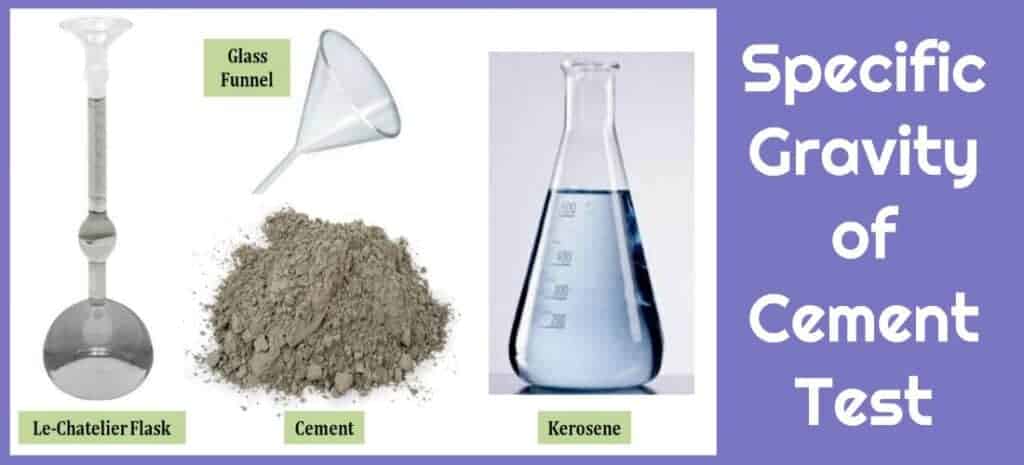
The equation of specific gravity of cement (Sg) is the weight of the volume of the material divided by the weight of the volume of water. The value must usually be between 0.1 to 100. Cement with a specific gravity of less than 1 will float in water whereas cement with an Sg more than 1 will sink in water. For determining the Sg of cement, kerosene is used instead of water as cement hydrates to form calcium oxide and not show any reaction. Here’s what is done in this cement test.
- For this test, a Lechatlier flask is freed from moisture dried, and weighed. The weight is noted as W1.
- 50gm cement is added into the flask and weighed. This weight is noted as W2.
- Kerosene is poured into the flask up to the neck and mixed thoroughly with zero air bubbles left in it. This is weight and noted as W3.
- The flask is then emptied and the flask is filled with kerosene up to the brim and weighed. This is weight is noted as W4.
- These values are put in this equation with Sg of kerosene as 0.79 g/cc,
Sg = (W2 – W1) / [ (W2 – W1) – (W3 – W4) ✕ 0.79 ].
7. Tensile Strength Test (IS Code: IS: 456 – 2000)
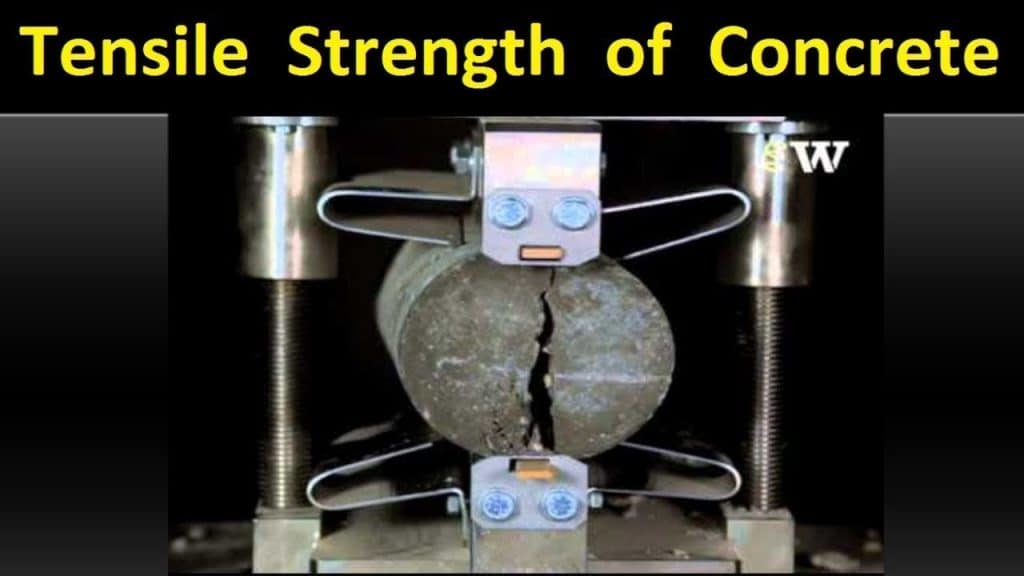
The tensile strength cement test is done using a tensile testing machine and a cement-mortar briquette. A cement and sand mortar ratio of 1:3 is mixed with a water content of 8% and molded into a briquette. This mixture is cured at a temperature of 29℃ or 25℃ for 24 hours at a humidity of 94%. The average strength of 6 briquettes is tested after 3 to 7 days is recorded.
8. Chemical Composition Cement Test (IS Code: IS: 269 – 1998)
The various constituents of cement are determined by different types of tests. The requirements of the chemical composition of cement in the IS Codes are:
- The weight of magnesia must be less than 5%.
- The weight of insoluble residue must be less than 1.50%.
- Tidal sulfur content must be less than 2.75%.
- Total loss on ignition must be less than 4%.
- Lime Saturation Factor (LSF) should be more than 0.66 but not more than 1.02.
- The ratio of the percentage of iron oxide and alumina should be more than 0.66.
9. Field Test of Cement
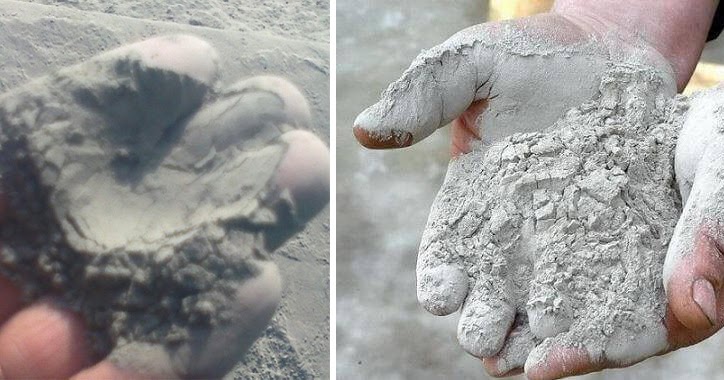
Field tests of cement are done on the site to determine the quality of the cement within a very short time. A series of tests are done to evaluate the condition of the cement such as,
- The date of manufacturing on the cement bag must be checked.
- The cement must have uniform color (gray with a shade of green).
- Hard lumps due to absorption of atmospheric moisture must not be there in the cement.
- The temperature inside the cement bag must be warm due to hydration.
- The cement paste must feel smooth when it is rubbed with fingers.
- The cement must float on the water before it finally sinks.
- Cement paste must have an earthy smell due to the slit and pounded clay.
- Glass plate test where a layer of cement is laid with no cracks after being dried.
- A cement block is immersed in water for 3 days and it should not break when a uniform is loaded on it.
10. Compressive Strength Test of Cement (IS Code: IS: 14858 (2000), IS: 10080-1982, IS: 650-1966)
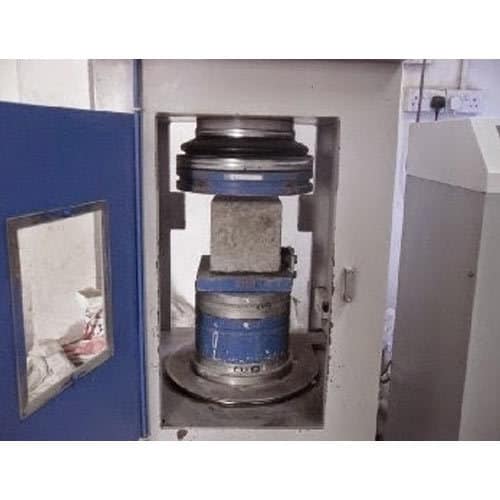
The compressive strength of cement is its capacity to withstand or resist compression. It is determined by the ability of the cement to resist forming fissures or cracks when compression is applied. Technically, the compressive strength of cement means its ability to resist compressive stress under the Compression Testing Machine (CTM) at 28 days.
The test is conducted at a temperature of 27 ∓ 2℃. the cement mortar is placed under CTM and the loading is applied axially on the specimen with no shock. The load is increased at the rate of 35 N/㎟/min till the mortar collapses. The reading at which the mortar collapses on the CTM is recorded which is the compressive strength of the cement.
The Bottom Line
Quality cement tests are carried out to check the quality and strength of the cement used in construction. These tests help to understand the usage of cement for a variety of purposes based on its performance and durability. Hope our page lends you an insight into the different types of cement tests done during its preparation.
Cement Tests FAQs:
1. What are the different types of cement?
Here are some names of different types of cement used in construction:
2. What are the different types of cement tests?
The different types of cement tests are:
3. What is the volume of cement?
One bag of cement has a volume of 1.226 cubic feet or 0.034722 cubic meters. This volume is approximately equal to 34.5 liters.
4. What is the pH of water for concrete?
According to IS 456:2000, the pH of water is greater than 6 for cement. While using this water for curing and mixing it must be clean and free of injurious amounts of organic materials, sugar, salts, alkalis, acids, oils, and other substances that may be deleterious to steel steel or concrete .
5. What is the ratio of concrete mix?
The safest ratio mix of cement is 4:2:1, which is 4 parts of crushed rock, 3 parts of sand, and 1 part of cement.






